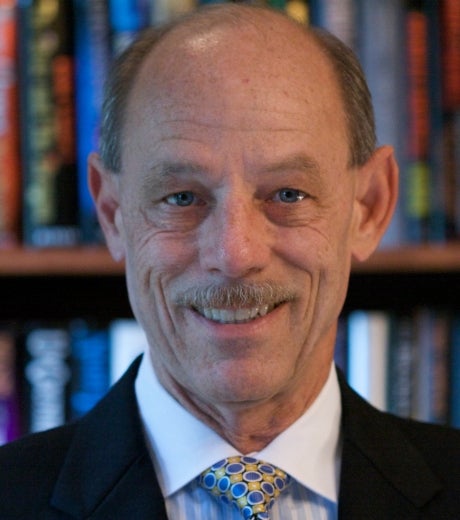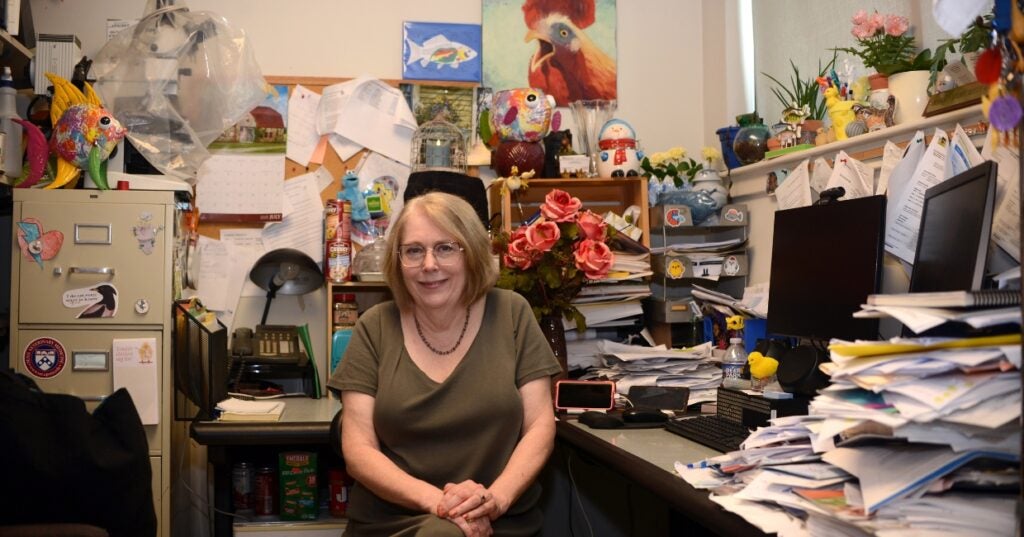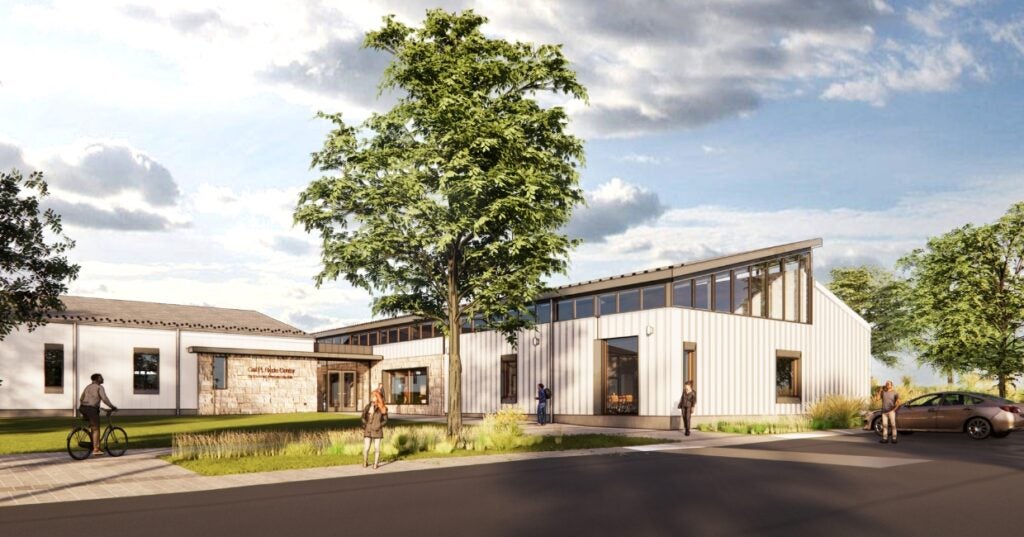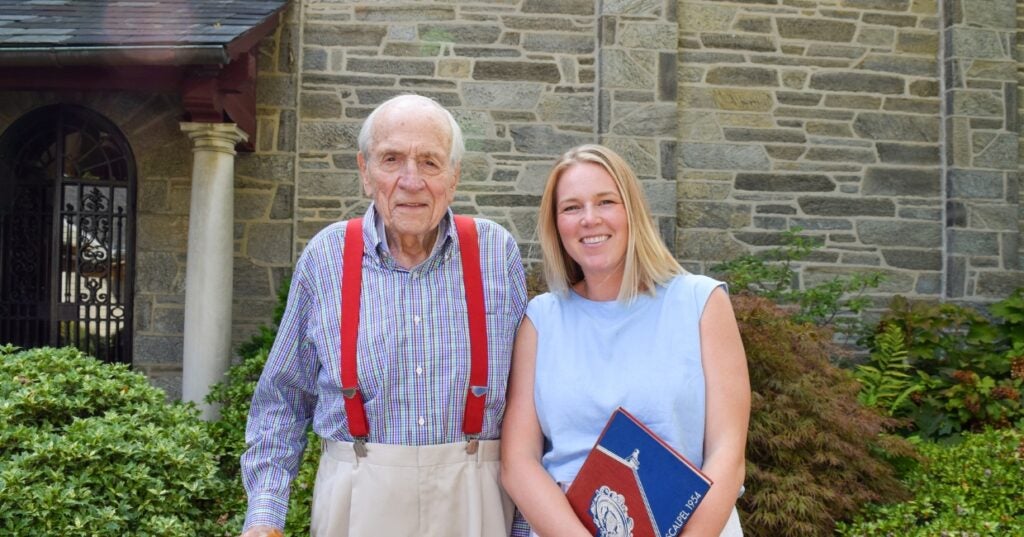From Bird Fractures to Human Shoulders
The Unexpected Journey of Stephen Peoples, V’84
As a child in Central Pennsylvania, Stephen Peoples, V’84, loved science and the natural world. The interest led him to Penn Vet. But beyond vet school, he was unsure exactly where his career would head—into clinical care, research, or something else entirely. He found the answer in an unexpected place: orthopedics.
As a second-year veterinary student, Peoples started working with Charles Newton, DVM, then professor of orthopedic surgery at Penn Vet. “I worked with Chuck for three years on joint biomechanics and fracture fixation in birds,” he said.
At the time, Peoples had no idea how profoundly the experience would influence the trajectory of his professional life.
From Practice to Industry Back to Academia
After earning his VMD, Peoples joined a private practice but found clinical care wasn’t the right fit. “I realized I missed the university setting and research environment,” he said.
Fortuitously, Peoples was recruited by DePuy Orthopaedics (now DePuy Synthes/Johnson & Johnson) to join its clinical research program.
“They knew my work with Chuck,” he said. “I went to Warsaw, Indiana—the company’s headquarters—wondering what I was getting into.” Once there, he found a deep affinity for complex puzzles that bridged discovery and regulation.
Within a few years, Peoples’ scientific expertise, leadership skills, and tenacity propelled him into a role as vice president of clinical research and regulatory affairs at DePuy.
“This was all FDA [Food and Drug Administration] work,” he explained. “I worked to steward DePuy’s advances through FDA approval, a critical step to get them to the market.
Over the next decade, Peoples became a recognized leader in the orthopedics industry for his successes ushering products through FDA.
When Johnson & Johnson (J&J) acquired DePuy in 1997, Peoples’ role expanded dramatically. He was named worldwide vice president for clinical, regulatory, and quality systems, overseeing global clinical, regulatory compliance and quality at the company’s 32 plants worldwide. J&J also sent him to executive business programs at the Wharton School and the University of Michigan.
“I had to learn all about quality across our multiple locations,” he said. “Luckily, I’m a fast learner and took that on. It was fascinating and challenging.”
After more than a decade in industry, Peoples again felt the pull of academic medicine. In 2009, he received a call from Joseph Iannotti, MD, PhD, director of the Orthopaedic and Rheumatologic Institute at Cleveland Clinic.
That call sparked a new chapter in Peoples’ career—consulting.
“I worked with Dr. Iannotti on shoulder replacement surgery research,” said Peoples, who’d left DePuy and set up his own shop as Peoples & Associates. “I worked alongside top orthopedic surgeons, developing new techniques to improve patient outcomes. It was an incredible experience collaborating with some of the most brilliant minds in orthopedic surgery.”
Bridging Continents, Building businesses, and Safeguarding Animals
As a consultant, Peoples worked with Cleveland Clinic for years. He also began consulting for European orthopedic companies, particularly in Northern Italy, on navigating the complex FDA approval process.
“I spent years flying into Venice, working with incredible teams, and helping to bring their innovations to the U.S. market,” he said. “It was some of the most rewarding work I’ve done. And not a bad place to go for business!”
Peoples’ impact on the orthopedics industry was widely noted. He became the first veterinarian ever elected as a fellow of the American Orthopedic Association, a distinction traditionally reserved for medical doctors. “That was unexpected,” he said. “I think they appreciated my unique perspective and the connection I made between veterinary and human medicine.”
He was also appointed to the Orthopedic Institute of Medicine. Additionally, he has served on several boards and councils, including, currently, Penn Vet’s Alumni Board; published numerous research papers; and spoken internationally on critical issues in orthopedics.
And despite his immersion in human medicine, Peoples never lost sight of his veterinary roots. Throughout his career, he served as a scientific liaison for numerous companies, ensuring ethical treatment of animals in research. “It was important to me that any animal research conducted was vital and done as humanely as possible,” he said.
Lifelong Curiosity, Lasting Impact
Peoples’ career has been defined by curiosity and adaptability. He’s proud of his contributions to orthopedic science but is, perhaps, most proud of another role—father to four children, who all share his creative streak, although their career paths diverge.
His eldest daughter, Katie, studied anthropology before transitioning into biotechnology marketing. His second daughter, Betsy, pursued cinematography and works in film and television. His son, Thomas, studied 3D animation and works in television production. His youngest, Michael, is a dancer and performer.
“And they’re all avid scuba divers, like me,” he said. “A different kind of exploration.”
Looking back, Peoples credits Penn Vet with shaping his approach to life and problem-solving. He laughed when recalling his acceptance into the School.
“It took me three tries,” he said. “I was determined.”
During his time at Penn Vet, Peoples recalls, “Dean [Robert] Marshak put me on different committees—honor code, curriculum. He even joked that I’d be a great senator. I told him I had no interest in politics—maybe that’s why I worked so well with the FDA!”
What Peoples valued most about his Penn Vet education, beyond making lifelong connections and friends, was how it shapes thinkers.
“The School taught us how to think, not what to think,” he said. “The ability to problem-solve, to adapt—that’s been invaluable. Everything calls for critical thinking, whether working with animals, orthopedic implants, or complex FDA regulations.”
Now semiretired, Peoples continues to consult on select projects.
He’s had an “incredible career, met amazing people, and tackled complex, interesting problems,” which, he said, “is what it’s all about.”

More from Bellwether

In the Office with Donna Kelly, DVM, MASCP, DACPV, DACVPM
Donna Kelly, DVM, MASCP, DACPV, DACVPM, shares her New Bolton Center office with the campus’s microbiology reference library.

Breaking New Ground: Penn Vet Builds Future-Ready Learning Hub
Set to open in the coming months, the 11,800-square-foot clinical skills center will be the first dedicated classroom space on the Kennett Square campus, ushering in a new era of…

A Love of Animals and the Land
The Penn Vet of Dean Snyder, V’54, was a very different place than today. So was the world.
